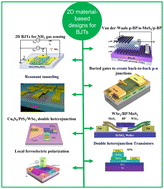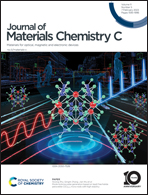Emerging trends in van der Waals 2D TMD heterojunction bipolar transistors
Abstract
The bipolar junction transistor, which is also known as a BJT, has become an essential component for many modern circuits that are used for high-speed computing and communication, which is due to its ability of being able to amplify high-power signals. 2D materials have the potential to be used in order to make BJTs with high amplification and frequency, because they can be naturally thin. Also, the properties of their parts can be changed in a variety of ways. We attempted to summarize the most recent and promising strategies in this review article, which can be used to develop the lateral and vertical BJT architectures. The majority of BJT nanodevices are fabricated using mechanical exfoliation of ultrathin 2D materials in order to explore their electrical behavior. This enables the creation of NPN or PNP BJTs from an intrinsic semiconductor or with different nanomaterials. A comparison of the performance and the characteristics of the BJT devices, which are based on 2D materials, was also conducted. In addition, a discussion of the current challenges and potential solutions is outlined. We hope that this summary of the current research of BJTs based on nanomaterials can be used in many different ways, and will help to progress the development of high-speed computing with integrated circuits that will usher in a new era of digital technology.

- This article is part of the themed collection: Journal of Materials Chemistry C Recent Review Articles


 Please wait while we load your content...
Please wait while we load your content...